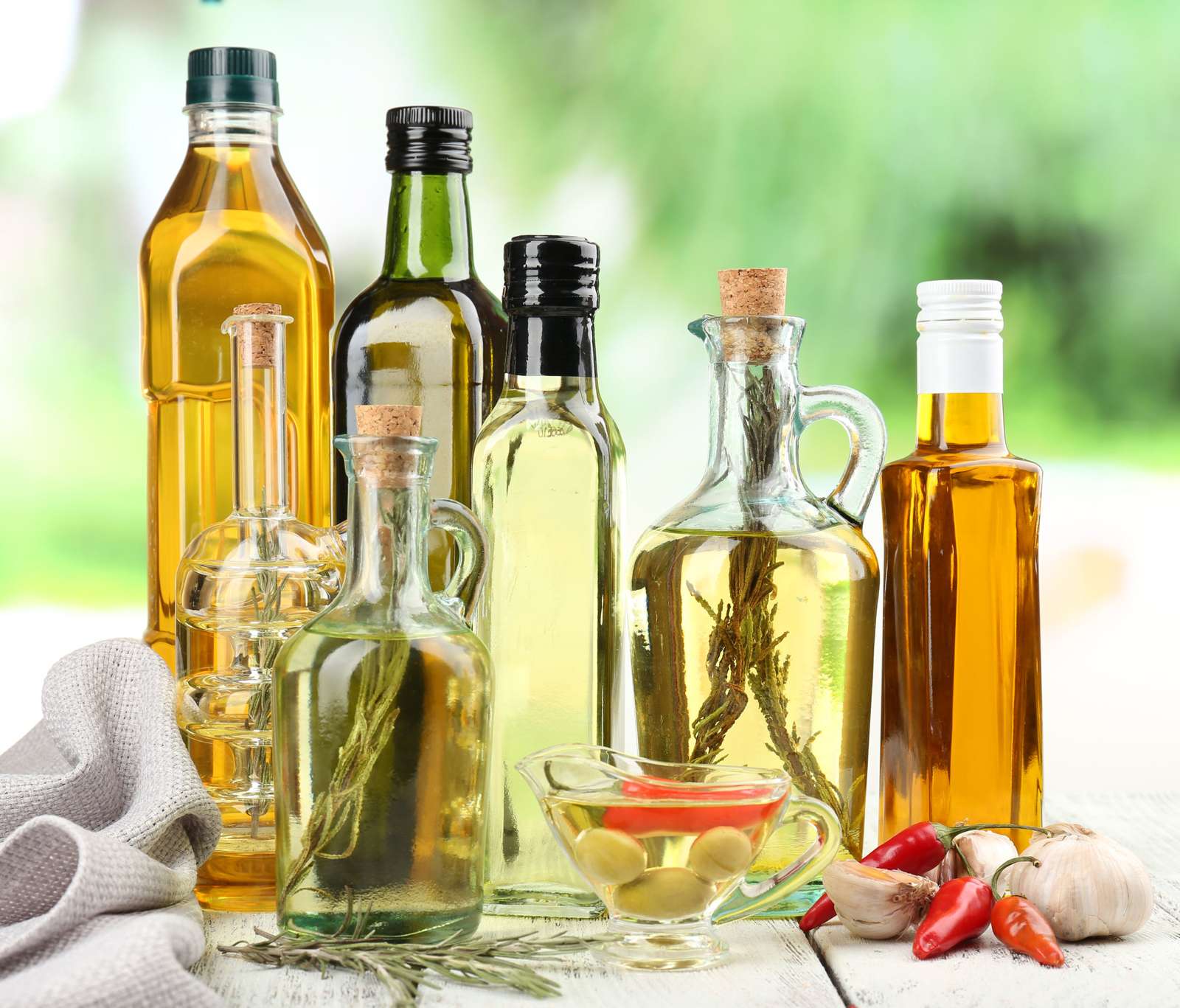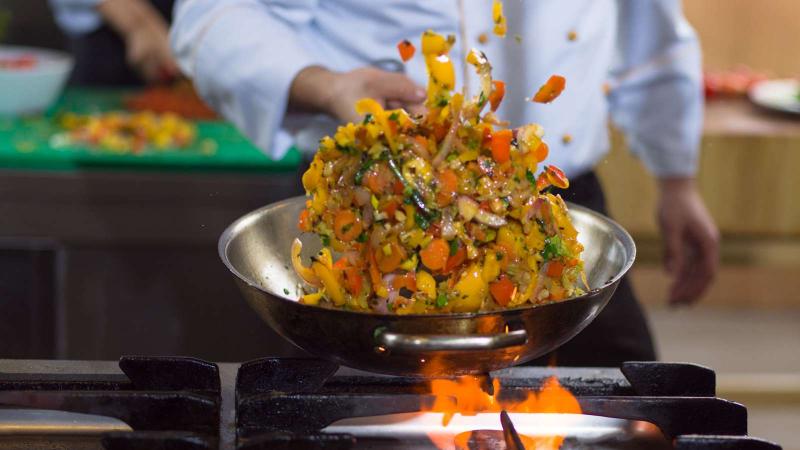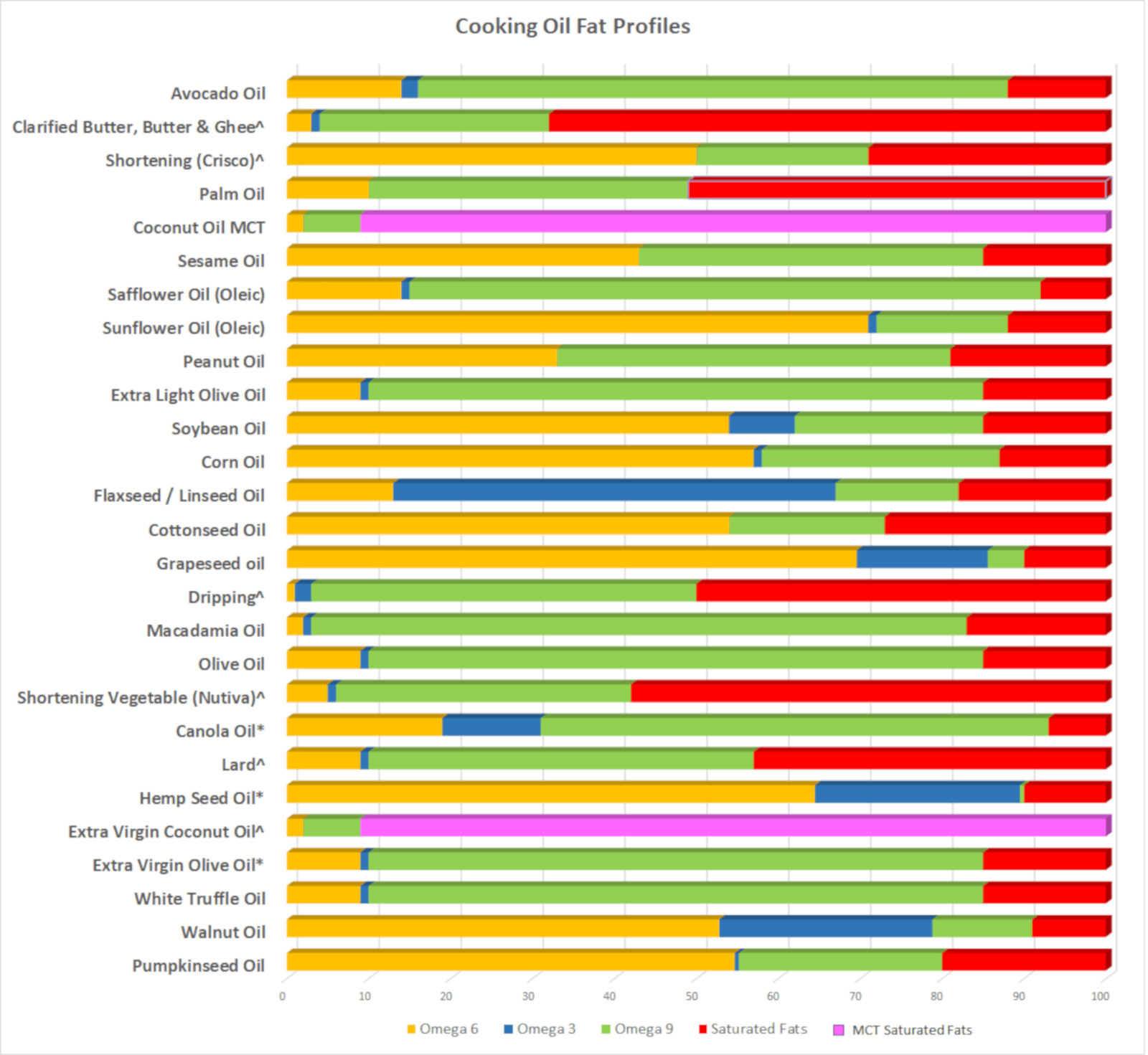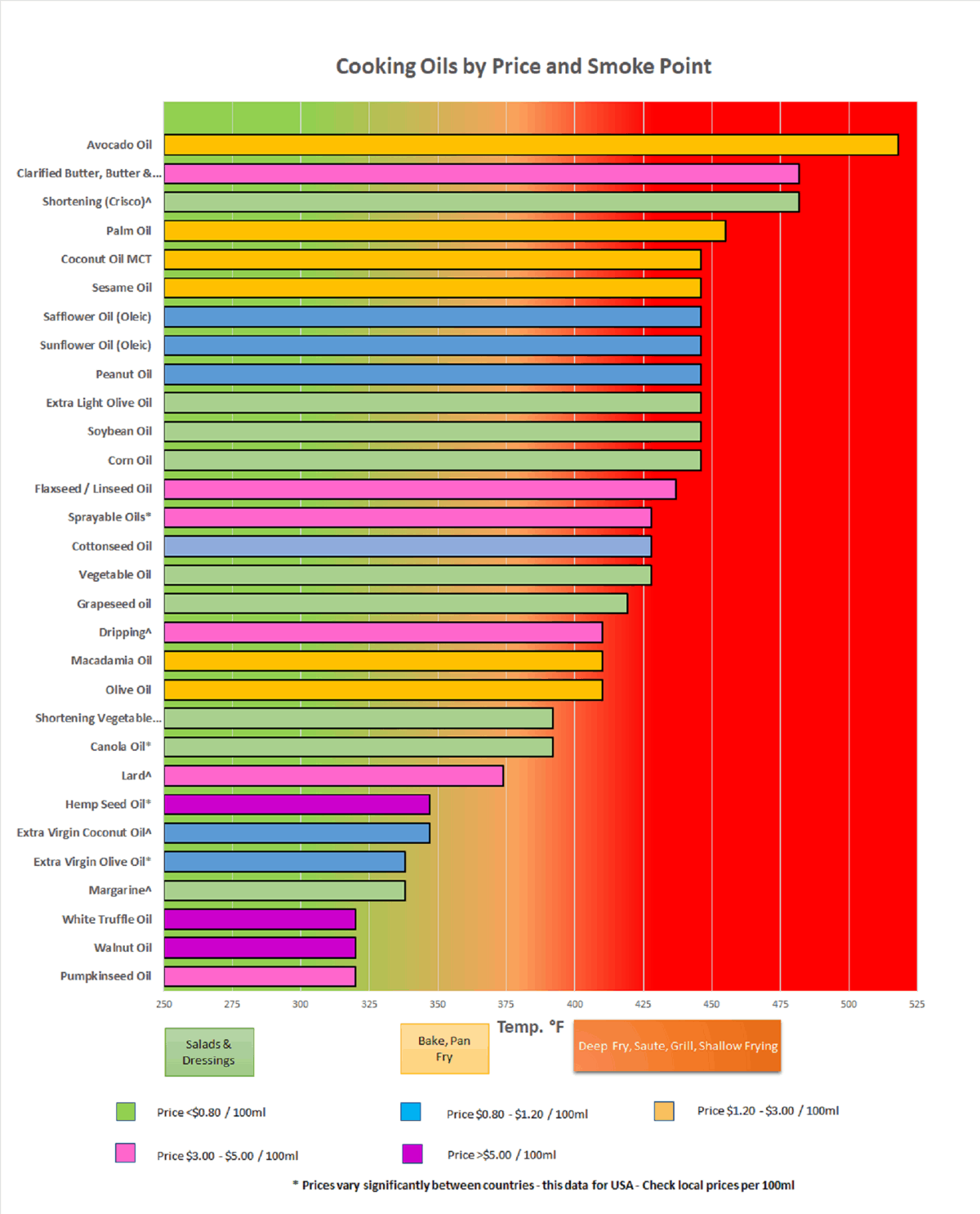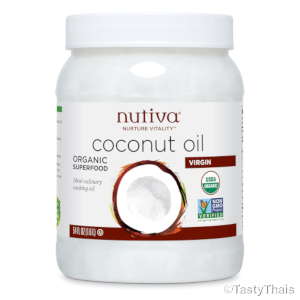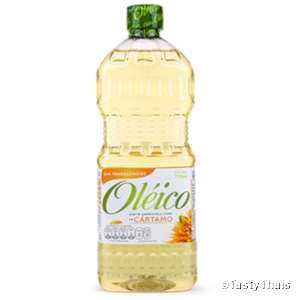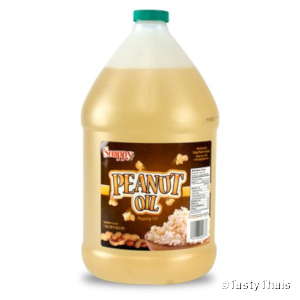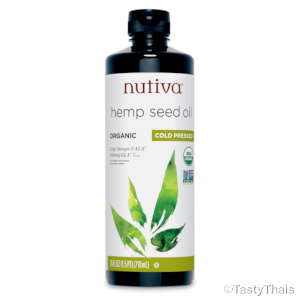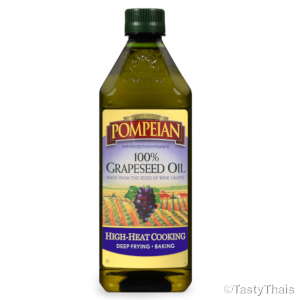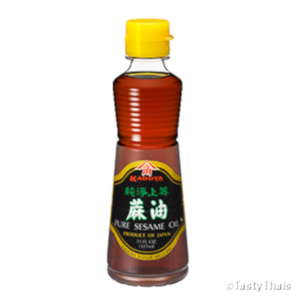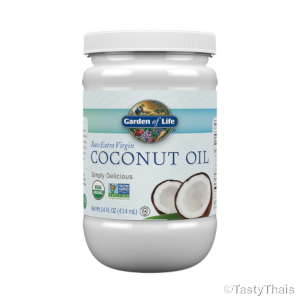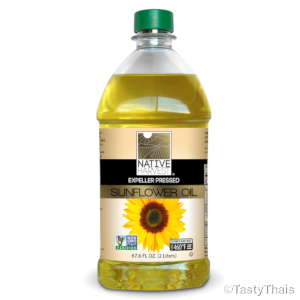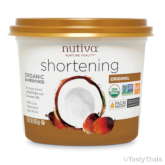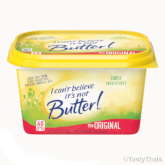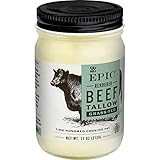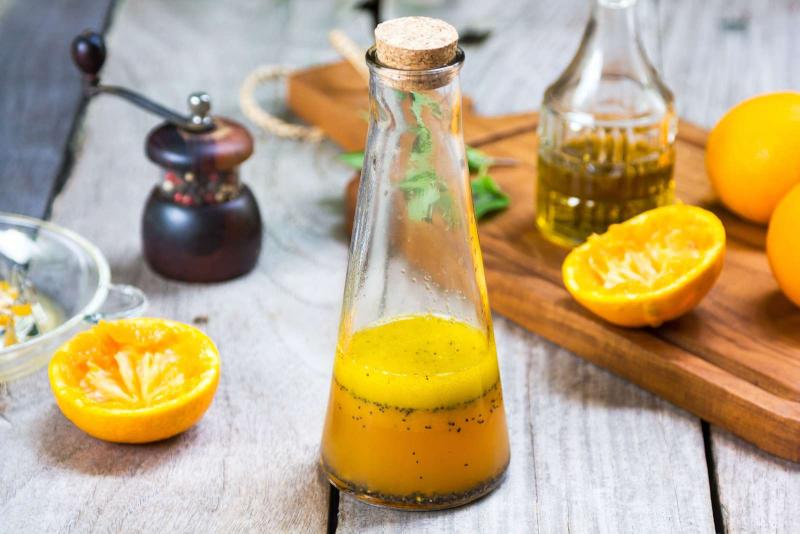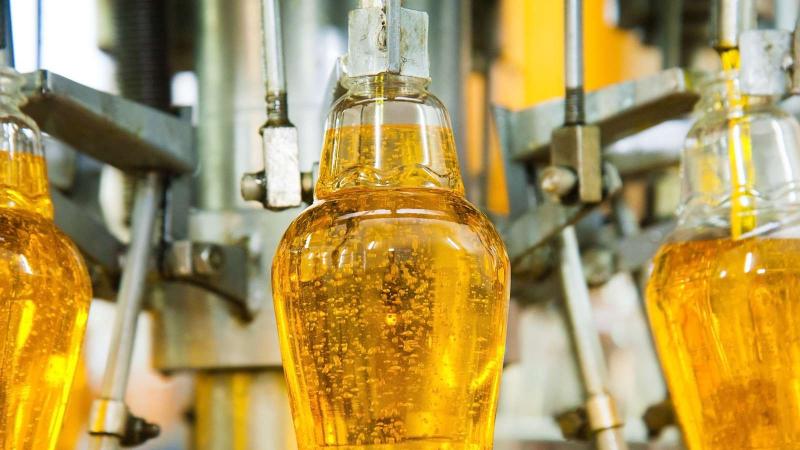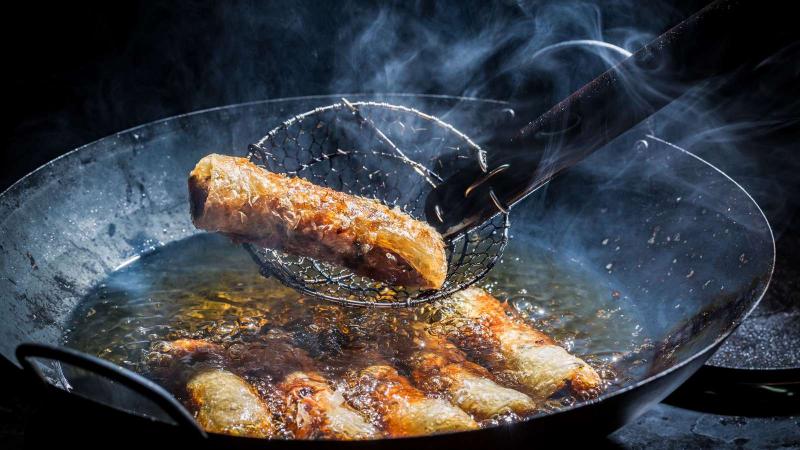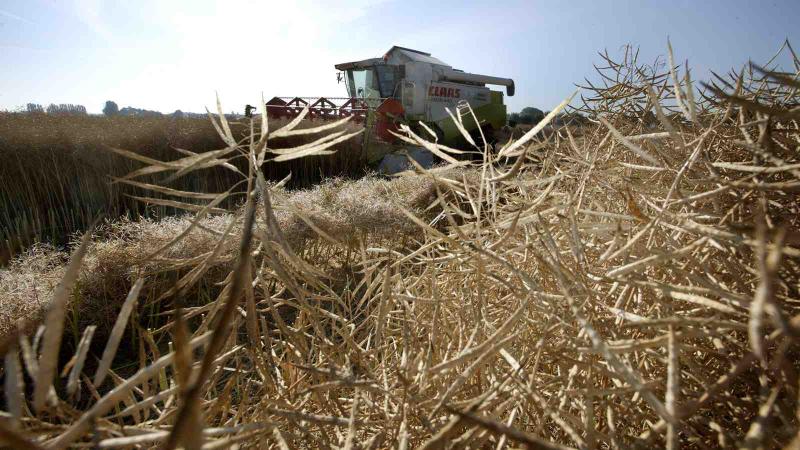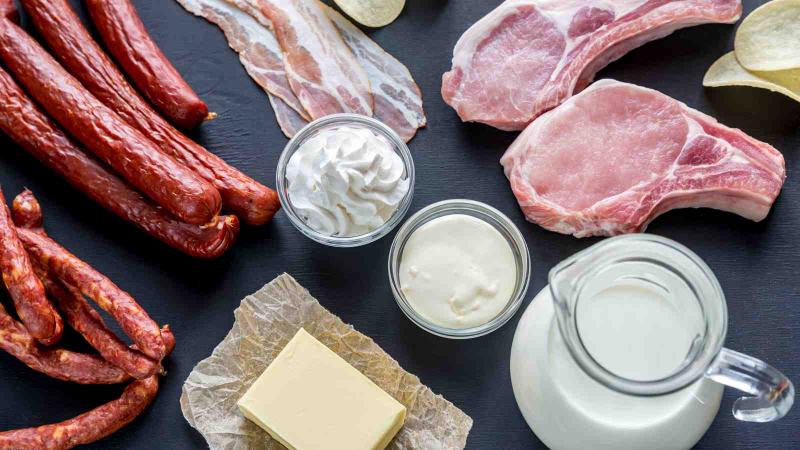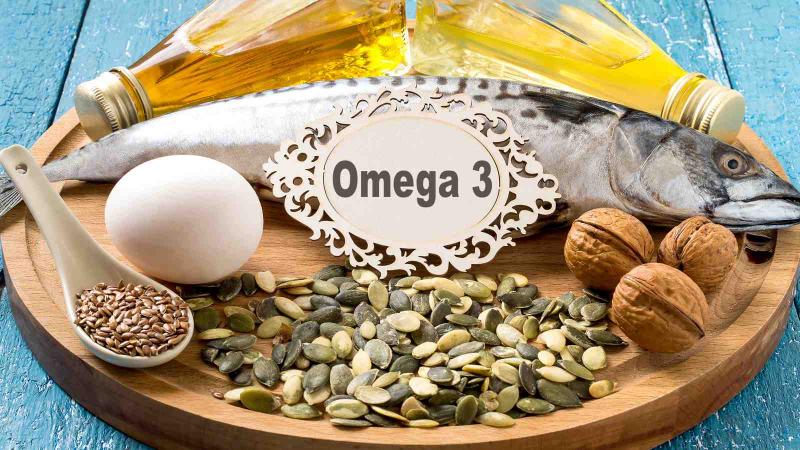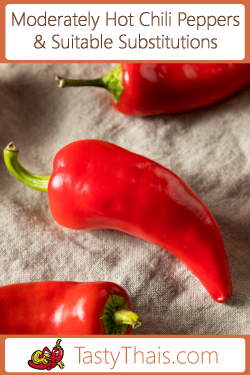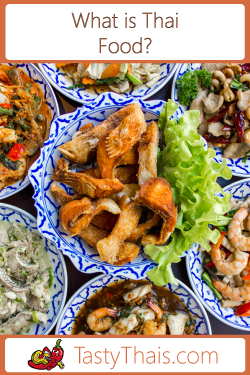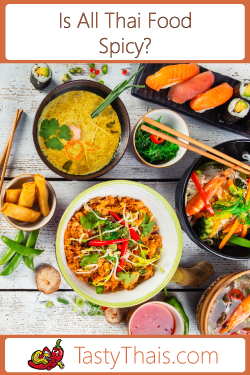What are the best cooking oils for your health?
It’s a simple question, and you might be hoping for a quick answer; or looking for something more in depth. Find out the healthiest cooking oils as well as information on what makes them healthy or not.
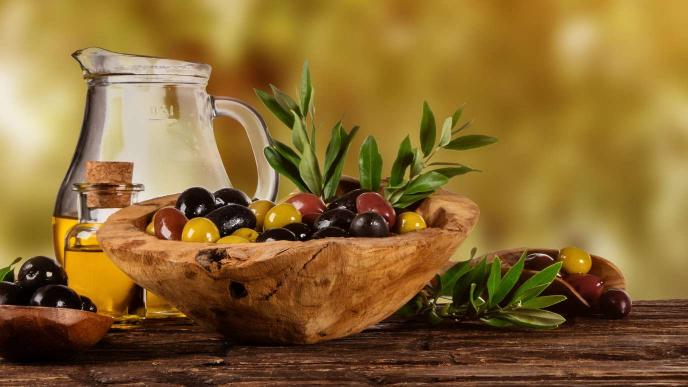
It would be great if we could rank cooking oils by ‘healthiest cooking oil’ but you can’t because, in part at least, it depends on your cooking method.
The healthiest cooking oil for salad dressing might be Extra Virgin Olive Oil but that is not the heathiest cooking oil for deep fat frying!
But there is a set of ‘good cooking oils’ as well as some bad ones and a few in between for each cooking method.
We will try to make it easy and if you want to dive deeper then we have more information for you to do that.
Links disclosure: Some links on this page go to affiliate partners where, without cost to you, we may receive a commission if you make a purchase.
Things to Consider in Choosing the Best Cooking Oil to Use
- Heat – Choose the right type of oil from the chart below to pick one that will cope with how hot the oil will get in cooking.
- Taste – Pick an oil with the taste profile you want for salads or specific dishes. Otherwise, choose an oil with a low taste profile.
- Fatty Acid Profile – Don’t shun saturated fats because of the hype but do keep a balance between these and monounsaturated fat oils or Omega-3 rich alternatives
- Omega-6 – Unless you are monitoring your intake from other sources, try lower Omega-6 content oils in cooking and increase good fish consumption to boost Omega-3 intake.
- Avoid highly processed oils altogether and especially products that have had to be chemically ‘fiddled with’ to make them seem like an alternative to something natural
- Use a mix of oils in your cooking – balance is the essence of life and it’s WAY MORE FUN!
Quick Pick – Simply the Best & Healthiest Oils by Cooking Method
Best Cooking Oils for Salad Dressings, Drizzling, Sauces & Dips
For salads and drizzling you use the oil naked or using very low heat and so you do not need to worry about smoke temperatures. Concentrate on the taste profile of the oils and mix it up.
- Extra Virgin Olive Oil – Great for taste and low saturated fat and antioxidants to help reduce inflammation and seems not to be adverse for your heart health in moderation
- Avocado Oil – Tasty and smooth with low saturated fats, high oleic acids and many other health benefits
- Walnut Oil – A nut oil with a good balance of Omega-6 and 3 fatty acids
- Sesame Oil – for a treat in small quantities
- Macadamia Oil – Very low in polyunsaturated fat and low in saturated fat too.
The aim is to use a mix of oils so you get a balance of nutrients overall, rather than only the benefits (and boredom of just one).
Best Cooking Oils for Baking
In baking the oil used will mix with other ingredients which affects how it reacts to heat. So you can use oils that have a medium smoke point (about 350°F) and up.
- Butter – for taste and reliability but high in saturated fat
- Lard – for shortening pastry and unless you eat a lot of pastry then don’t worry about saturated fat in it
- Coconut & Red Palm Oil Shortening – Good alternative to lard for shortening if you want to reduce saturated fat or eat a lot of pastry
- Extra Virgin Coconut Oil – for taste and minerals. Saturated fats are plentiful but medium chain and more easy to absorb by your body.
- Extra Virgin or Virgin Olive Oil – beware of taste implications and if you want a more neutral flavour gor for Pure or Light Olive Oil. Much lower saturated fat.
Again using a mix of oils is sensible and use Olive Oil to balance the use of the other oils high in saturated fats.
Best Cooking Oils for Roasting, Low Heat Frying, Pan Frying
In these cooking methods the heat is either indirect, in the case of roasting, or at a lower temperature in the case of pan frying.
- Ghee or Clarified Butter – for a beautiful taste but you are adding saturated fat again so be aware of balance overall in your diet.
- Beef Dripping or Lard – Great for roasting vegetables with moderate taste influence.
- Olive Oil – If cooking at a higher heat or pan frying then use Pure Olive oil or Light Olive Oil for the higher temperature tolerance and low saturated fat profile. Extra Virgin Olive Oil is an alternative but be aware of taste influence.
- Macadamia Oil – a great and flexible oil that’s very low in polyunsaturated fat.
- Avocado Oil – another low polyunsaturated and low saturated fat oil for balance but better for pan frying.
- Coconut Oil – high in saturated fats but they are Medium-Chain and imparts a great taste
Don’t forget to keep a balance of oil types and profiles.
Best Cooking Oils for High Temperature Frying – Saute, Stir Fry & Shallow Frying
In this type of frying you need a high temperature and so an oil with a high smoke point.
- Ghee or Clarified Butter – Better for cooking methods requiring less oil to fry as it is relatively expensive – high smoke point and very stable under heat.
- Pure Olive Oil – Great for the higher temperature tolerance over Extra Virgin Olive Oil and low in saturated fats.
- Avocado Oil – Again expensive for methods using large quantities but an excellent oil for methods requiring moderate or little fat.
- Macadamia Oil – Not for deep frying but good for saute and stir fry. Low in polyunsaturated fat.
- Coconut Oil – Not for deep frying but excellent for stir fry and saute
Keep a mix between the high saturated fat oils like coconut and butter/ghee and the monunsaturated nut and olive oils.
Best Cooking Oil for Deep Fat Frying
Deep fat frying is not the best cooking method as it uses such a lot of oil which is a pain to clean if you want to reuse it.
One of the major issues is that the cheap vegetable based oils commonly used just do not withstand heat very well before they start to release carcinogenic particles and oxidize so they don’t last very well.
People tend to use the oil and are loathe to throw it away which means that most of the deep frying is done in oil that is already compromised.
- Palm Oil is the overall winner for deep fat frying because it is inexpensive and has the best tolerance to heat compared to vegetable oils – buy from a sustainable source. Reduced saturated fat content, high smoke point and low Omega-6.
Nearly every other oil is not cost effective or is terrible for you in one way or another.
Fat Profiles of Popular Cooking Oils (with chart)
From a health point of view, you should consider the nutrients in the oil such as vitamins as well as the type of fatty acids it contains – the omegas 3, 6 & 9 and the way your body processes these. If you are cooking with heat then you need to look at what toxins the oil might produce as you heat it up.
Feel free to use this image on your website on the proviso that you give attribution back to https://www.tastythais.com. A good resolution image can be found here.
You also need to take care of your wallet as well, so the cost of the oil as well as how long it will last is a factor, more important where you need a lot of oil such as for deep fat frying.
If you arrived on this page looking for cooking oil for a specific type of cooking then use the chart below to filter suitable oils by type of cooking. The higher up the chart, the more expensive the price range for the average oil of that type.
How Type of Cooking Affects Choice of Cooking Oil
The type of cooking that you will do will greatly affect the best oil for the job. If you are cooking with high heat you must use an oil with a high smoke point as this is the point at which the oil starts to break down and form toxins (which smoke).
These toxins remain in the oil even after it cools. So basically once your oil is smokin’ hot it’s done for and you need to throw it away. Not only will your food taste lousy but it won’t do your body any good either.
Chart of Popular Cooking Oils by Price & Smoke Point
Feel free to use this image on your website on the proviso that you give attribution back to https://www.tastythais.com. A good resolution image can be found here.
28 Different Types of Cooking Oil Compared
Avocado Oil
Great for salads, sauces, pan frying and shallow frying. Many health benefits.
Avocado Oil is one of the best cooking oils you can buy.
Not only does it taste great but you can use it for anything from salads to deep fat frying becasue of its high smoke point. You can be selective and choose a non-GMO product too like the one above.
Avocado oil contains little saturated fat and lots of monounsaturated fat which is mainly Omega-9 oleic acid. That is about as good a fat profile you can get.
The only real downside of this oil is the price and that is not that high compared to most other good oils. The comparatively high price will discourage you from using it for deep fat frying because of the amount of oil you need to use.
That is a shame as it is very well suited to deep fat frying because of its high smoke point, resistance to oxidation (better than refined olive oil) and a high dosing of phytosterols which help lower that bad LDL cholesterol.
It’s a real winner – maybe even the best cooking oil you can buy.
Pros
- Great Fat Profile
- High Smoke Point
- Character of Taste
- Ultimate Versatility
Cons
- Pricey for Deep Frying
Pure Olive Oil
Olive Oil is another fantastic oil for cooking which comes in several different forms.
Extra Virgin Olive Oil and Virgin Olive Oil are oils obtained by pressing olives as mankind has been doing for hundreds of years.
There are strict controls on the taste profile and acidic profile of oils marketed using the word virgin’ ánd neither heat nor chemicals can be used in their extraction.
Pure olive oils, as the one above, are olive oils that HAVE been refined. Usually from a virgin oil that does not quite meet standards. Chemicals and heat is allowed to be used and after refining they are generally blended with virgin olive oil to add color and aroma.
They have better oxidation resitance under heat, a lower price point, and a longer shelf life but other than these considerations virgin olive oil is much preferred.
Pros
- Good Fat Profile
- Quite High Smoke Point
- Resists Oxidation
- Well Priced & Long Lasting
- Good for Less Olive Taste
Cons
- Still Quite Expensive for Deep Frying
- Virgin Oil Better for Lower Temps.
- Refining Removes Some Nutrients
- Better Oils Available for Salads etc.
Walnut Oil
Walnut oil is an expensive oil that is rich in Omega-3 fatty acids compared to most oils which makes its Omega-6 to Omega-3 ratio better for you. You might like to read the information section at the bottom of this article for a better understanding of why that is important.
It is strong tasting and so should be used where a walnut taste would compliment the food. That makes it great for salads and to drizzle over pasta.
It has a low smoke point which makes it unsuited to cooking with heat.
Pros
- Omega-3 – Omega-6 Balance
- Characteristic Taste
- Excellent for Salads, Pasta, Soups
- Cold Pressed, Organic & Pure
Cons
- Very Expensive
- Low Smoke Point
- Unsuited to Any Heat
Extra Virgin Olive Oil
Extra Virgin Olive Oil is a wonderfully versatile oil that most people will agree is the top of the tree when it comes to cooking oils.
It is low in saturated fats and high in monounsaturated fats and so low in polyunsaturated fats which gives it a very good fat profile.
This oil is excellent when married with other ingredients in salad dressings and sauces and is also great for lower temperature frying and some baking.
Whilst it can be used for stir frying and saute, Extra Light Olive Oil is sometimes preferred becasue of its better handling of higher temperatures as well as having a much blander taste.
Extra Virgin Olive Oil can have quite a strong taste, usually the darker colored oils are stronger tasting and taste does vary a lot by brand.
It lasts reasonably well but is better to store it in a dark place as with all oils since light will gradually cause deterioration.
Pros
- Great Fat Profile
- Quite High Smoke Point
- Character of Taste
- Very Versatile
- Low in Saturated & Polyunsaturated Fat
Cons
- High Temperature Frying Use Light Oilve Oil Instead
- Quite Expensive
- A Distinctive Taste You Might Not Want
Coconut Oil
Coconut Oil is another oil that has been used for cooking over the centuries.
A natural and healthy oil despite its high saturated fat content and especially if you shop for brands that offer MCT versions. The MCT oils are kinder to your liver and help achieve a better cholesterol balance between the good and bad types of cholesterol.
The virgin coconut oils are solid at room temperature so refined oils are used mainly for cooking. As long as you ensure there are no added hydrogenated oils – in other words it is 100% coconut oil – then you should be good to go for most pan types of frying as the refined coconut oil has less coconut taste attached to it.
The refining that is done to coconut oil is not the same as the refining that vegetable oil goes through and so comments you read in this article referencing refining of vegetable oils are not applicable to this oil.
Virgin coconut oil does contain some extra nutrients but is not very cook friendly when used at room temperature and has a much lower smoke point.
Pros
- Saturated Fats are Medium-Chain
- Moderately High Smoke Point
- Character of Taste
- Wide Range of Uses
Cons
- It IS a refined oil.
- Less nutrients than virgin type
- Not suited to Deep Frying
- Coconut taste not universally liked
Macadamia Oil
Macadamia Oil is very underestimated.
It has a moderately high smoke point and much greater quantities of Omega-3 than Omega-6 fatty acids. That helps counter the imbalance of Omega-6 in most people’s diets which is believed to cause inflammation that can lead to several health issues.
It is a good oil to use for salad dressings, roasting, saute, stir frying, light frying, and grilling but less suited to deep frying because of the cost. It is even quite well suited to baking because of its lightness.
The flavor is not particularly strong with a nice buttery flavor and is good for a change to use in mayonnaise or roasting poultry.
There are some solvent refined macadamia oils on the market which are cheaper and should be avoided.
The virgin cold pressed macadamia oils are the best by some margin.
Another excellent choice to mix up the oils you use for cooking.
Pros
- Great Fat Profile
- Quite High Smoke Point
- Nutty Taste
- Good Versatility
Cons
- Avoid Refined Versions
- Fairly Expensive
Safflower Oil
Great for dressings, grilling, saute and is better than some of the others in its class.
Safflower cooking oil is a refined vegetable oil and is better than some of the others in its class.
The oil is expeller pressed and then quite significantly refined. It does have a pretty good fat profile but is not very cheap. The problem is that as the oil is primarily polyunsaturated fats it has a poor tolerance to oxidation under heat and is therefore not the best for deep or shallow frying.
It is not best suited because it does not have much of a shelf life if used for high temperature cooking.
But if you deep fry infrequently and tend to throw the oil away afterwards then safflower oil has its uses.
Pros
- Good Fat Profile
- High Smoke Point
- It’s an Option if You Throw it Away After Use
Cons
- Still Quite Expensive for Deep Frying
- Virgin Oil Better for Lower Temps.
- Refining Removes Some Nutrients
- Better Oils Available for Salads etc.
Peanut Oil
Good balance of pros and cons, it's average but has quite a high smoke point.
Peanut Oil is an interesting oil in that it has a balance of good and bad things going for it.
It has quite a high smoke point which leaves it a candidate for high temperature frying but has quite a substantial Omega-6 content level. On the other hand it has less polyunsaturated fats than most other oils which is good but needs quite a lot of refining for use which is not so good.
On balance this is a so-so oil that is suited to hot frying but there are better alternatives for low quanity uses as the extra cost of those alternatives is not a lot in money terms (becasue you are not using so much)
Pros
- Pretty Good Fat Profile
- High Smoke Point
- Mild Nutty Taste
- For Moderate Quantity Frying
Cons
- PBetter alternatives for Deep Frying
- Polyunsaturated Content Quite High
- Better Options for Salads & Naked Use
Hemp Seed Oil
Has all 20 amino acids, perfect balance of omega 3 & 6 and is great for a lot of things.
Hemp Seed Oil is used more regularly for skin care than for cooking.
It has a low smoke point and so is not suited to frying.
It won’t make you high and does not have the best fat profile with more Omega-6 than Omega-3 fatty acids.
The best use you can make of this oil if you like the flavor is to use it neat on salads for a change or to use as an ingredient in mayonnaises or dips.
Pros
- Unique Taste
- No Hallucinogenic Effects
- A Change is as Good as a Rest
- Use it on Your Skin if it Gets Old!
Cons
- Quite Expensive
- Limited Uses
Grapeseed Oil
Grapeseed Oil is another quite highly processed oil derived from grape seeds.
It is pretty cheap and has a moderately high smoke point which makes it OK for higher temperature frying except being high in polyunsaturates means toxins appearing quite quickly in hot frying.
And it has a high Omega-6 content and oxidizes if heated at high temperature for any length of time. That makes it not so great for shallow or deep fat frying.
You can use it in baking or for making sauces but why bother when there are other oils that taste better for those uses anyway.
If you are big into baking then this may offer a good cost alternative.
Pros
- Great Fat Profile
- High Smoke Point
- Character of Taste
- Ultimate Versatility
Cons
- High in Polyunsaturates
- High in Omega 6
- Just Nothing Exceptional
- Highly Refined
Cottonseed Oil
Horribly refined oil to use up cottonseeds that no one wants!
Highly marketed because it is just not good at very much except using up cottonseeds.
Bad for the environment and not great for you but your wallet might be happy as it is quite cheap.
Lots of hydrogenated versions of this cheap oil too.
Just avoid it.
Pros
- Ummmm…. oh yes….
- Cheap as Chips but Not as Good
Cons
- It is a Marketers Ruse to Sell Rubbish
Soybean Oil
Soyabean Oil is a potential choice for deep frying with a quite high smoke point.
It does not have the best fatty acid profile so you will be getting too much Omega-6 thanb you might want but then again the profile is not the worst either.
The big benefit of soyabean oil is that it is cheap. So even though it is has about half of its content as polyunsaturated fat which will oxidise fairly readily when heated, it is cheap enough to dump after relatively few uses.
It is an unexceptional oil that is good for shallow frying or deep frying as long as you do not try to use it too many times or cook for long periods at high heat such as in a commercial circumstance.
It does not have any other qualities that make it stand out so for low quantity oil use methods use a better oil.
Pros
- Cheap
- High Quantity Use Oil You Can Throw Away
Cons
- OK for Shallow Deep Frying
- Dispose of Quickly
- Not for Long Periods Under High Heat
Palm Oil
Palm Oil comes from the coconut palm and is a cheap and pretty good oil for high quantity use.
Unlike soyabean oil it is high in monounsaturated fact and so is better able to stand high temperatures for longer.
The bad press for palm oil comes from the fact that its cultivation is poorly regulated, concentrating in countries that are highly corrupt or with poor regulation oversight resulting in environmental damage from deforestation.
We do not accept this is a reaason to stop using the oil as there are brands that get their raw material from sustainable resources and palm oil is a much better alternative in almost all respects over highly refined vegetable oils promoted by big agriculture in the West.
Whilst it is not the best tasting oil for low temperature use it is one of the best for high temperature deep frying or shallow frying because it lasts well even under high heat and is cheap, so suited to high quantity demands.
Pros
- High in Monounsaturated Fats
- Good Oxidation Resistance
- Cheap & Disposable
- High Smoke Point
Cons
- Moderate in Saturated Fats
- Buy a Sustainable Brand
Vegetable Oil
Pure vegetable oil is a master blend of science and marketing with the audacity to call something pure when the only thing pure about it is that it is made from vegetables in the widest sense of the world.
Highly refined and almost certainly subject to a horrendus cauldron of toxic chemicals to process which then have to be removed. And even with all those chemicals being used it is still dirt cheap.
That is because the raw materials are well described as dirt – devoid of anything healthy and so often hydrogenated to resemble something else natural you might use at a cheaper price.
It is a confidence trick – you’d be mad to use it so don’t.
Pros
- Cheap and Nasty
Cons
- Horrible
- Nasty
- A Marketing Cheat
Virgin Pumpkin Seed Oil
Very low smoke point but is a good source of nutrients.
Extra Virgin Pumpkin Seed Oil has a very low smoke point so forget putting it anywhere near flames. So frying is definitely out of it.
Pumpkin Seed Oil does not have a great fatty acid profile either with rather too much Omega-6 but then again if you are not heating it up then oxidation is less of an issue.
But it is a good source of nutrients and anti-oxidants that may have some benefits in boosting your LDL – HDL (bad to good) cholesterol levels which might help reduce heart disease – as strange as it might seem that an oil might be able to do that.
So feel free to use a little on salads or in dressings and soups or even on pasta if you want to switch things up a little.
Pros
- Anti-Oxidants
- Some Minerals in Virgin Types
- Character of Taste
- Good for a Change
Cons
- Low Temperature Use Only
- Quite High in Omega 6
Flaxseed Oil
Flaxseed Oil is made from Flax Seed so at least the name matches, unlike Canola Oil which is made from Rapeseed. But then again Flaxseed Oil is the same as Linseed oil which you use to coat timber products such as cricket bats. Perhaps that is why the edible oil is so called?
Anyway, if someone is coating their cricket bats with the stuff is it going to induce me to use it for frying my next fillet steak? I think not.
The oil has a very low smoking point anyway, so it’s no use for frying with. But apparently it has some people worked up enough to put it on salads and in sauces.
If you want to try it do get the organic version or at least the virgin cold pressed product but be aware the taste is quite strong as you might expect if you ever had a cricket bat in your mouth.
Additionally, it has a good Omega-3 to Omega-6 profile and so might help reduce heart disease apparently. One way to extend your innings I guess!
Pros
- Good Omega-3 to 6 Profile
- Nutty Taste
- Don’t Like it? Use it to oil your Woods!
- Signature Taste
Cons
- Unconvinced on its Benefits
Sesame Oil
Sesame seeds are found on rolls and bagels and get themselves everywhere!
Here they are in cooking oil and quite as enjoyable as they are on your daily bread or in your healthy salads.
Admittedly, Sesame Oil is quite high in Omega-6 but this is balance by a similar Omega-9 content percentage which provides a nice balance.
Sesame Oil has a distinctive, nutty taste that many find very nice on salads and on pasta and despite it’s fairly moderate smoking point, can be used in stir frying without issue.
This is an oil used quite often in stir fry recipes to add a little nuance to the taste and is one of the staple oils in our kitchen.
If you have never tried it then it very much deserves a little attention from you – unless you have a nut allergy in which case it is not worth the risk.
Pros
- Fair Fat Profile
- Moderate Smoke Point
- Pleasant Distinctive Taste
- Quite a Versatile Oil
Cons
- Taste Profile Suits Minimal Quantity
- Fairly Expensive But You Use Little
Extra Light Olive Oil
Extra Light Olive Oil is a great cooking oil for frying.
It is better than Virgin Olive Oil for frying because it has a much milder taste and odor and higher smoke point.
Let’s face it we are not cooking in oil for the vitamins – we have fruit and vegetables for that – so the fact that the extra filtering and cooking heat destroys some of those should not be our main concern.
Use this oil, along with a couple of the others highlighted, for your shallow frying and even deep frying cooking if you can find a cheap enough supply.
You can use this oil interchangeably with virgin or extra virgin olive oil for stir frying and pan frying depending on how much taste you want from the oil. The Extra Virgin Olive Oil is much more ‘olivy’ tasting and it seems the darker the color the stronger the taste.
Plenty of evidence that a diet including olive oil is healthy, especially from the Greeks and Southern Europeans – and they have me convinced.
If you are doing salads or for most other raw use you are better off with Virgin Olive Oil as it has more nutrients and the taste is just so much nicer for those dishes where you want it.
Pros
- Empirical Evidence its Good for You
- High Smoke Point
- Little Taste with Light Olive Oil
- Use to Fry Without Adding Taste
- Lots of Monounsaturated Content
- Longer Lasting than Virgin Olive Oil
Cons
- Not as Tasty as Virgin Olive Oil
- Use for Frying – Virgin for Salads
- Keep Cool and Dark for Longer Life
Corn Oil
Corn Oil is one of the most popular cooking oils on the market.
The reason for this is simple. It is relatively cheap, it has a good high smoke point and it has very little taste. Perfect for deep or shallow frying where you want the full, unadulterated taste of whatever you are cooking to shine through.
All those things are true but here’s the BUT. Like most vegetable oils it is high in polyunsaturated fat which breaks down and oxidizes when heated – that means toxins are released which you will end up consuming.
The other issue is that most of that polyunsaturated fatty acid is the Omega-6 variety which is bad because most of us already have way too much from everything else we eat in our diet already.
Since Omega-6 is a substance that promotes inflammation so we don’t need more from our cooking oil. Omega-3 fatty acids are anti-inflammatory and so what we need is to balance the input of Omega-6 and Omega-3 polyunsaturated fats.
To do that we need to reduce the use of high Omega-6 content oils and replace them with ones high in Omega-3.
Really we need to reduce our oil intake altogether because all oils are fattening.
Pros
- High Smoke Point
- Almost Tasteless
- Low Saturated Fat Content
Cons
- Releases Toxins When Heated
- Too Much Omega-6 Content
- Already in Many Processed Foods
Canola Oil or Rapeseed Oil
Just NO!
This stuff is so bad they can’t even call it by its correct name. It is produced from seeds which quickly go foul smelling and are then processed to death to clean it up and present it to you as something healthy.
It is marketing on steroids and deserves no place inside your body. Do not be fooled by the high monounsaturated fatty acid profile either – this is one highly processed oil from a very poor quality crop.
Don’t use this.
Pros
- There are none!
Cons
- Anything that could be wrong – is wrong
Virgin Coconut Oil
Coconut Oil has been in Western kitchens for a very long time in the form of Palmitic Acid which you will find listed in quite a few product and a lot of very bad hydrogenated fats such as margarine.
It is very high in plant based saturated fat, most of which is in the form medium chain triglycerides which your body can readily cope with.
However it has a fairly low smoke point and so not so good for high temperature cooking which means it is not suited for deep or shallow fat frying, sauteing or stir frying.
It is not much good for salad dressings or using naked as it is solid at room temperature.
So what is it good for? Well, it’s handy for baking and that is about it.
For frying use the refined version which has a higher smoke point and is more versatile.
Pros
- Good for Baking
- Character of Taste
Cons
- Not Well Suited for Frying
- Solid at Room Temperature
- High Saturated Fat Content is Probably Not the Big Issue it is Made Out to Be
- Source from Sustainable Resources
Sunflower Oil
If you’ve been reading up on the other plant oils in here you probably know I am going to say that Sunflower Oil is high in Omega-6 content that your body almost certainly has enough of.
It has a high smoke point which makes it good for deep frying except that toxins are produced after a short period under heating. Not good.
Like most other processed vegetable oils it is better out of your kitchen and substituted with an alternative like Extra Light Olive Oil or Macadamia Oil.
Pros
- Pretty Cheap
- High Smoke Point
- Quite Tasteless
Cons
- High Omega-6 Content
- High Polyunsaturate Fat Content
- Oxidizes Rapidy with Toxins when Heated
Red Palm & Coconut Shortening
Great to have in your kitchen, pretty good choice for most cooking uses.
If you use the word ‘Shortening’ these days the listener will be running for the hills whist looking for a psychiatrist to haul you off to the funny farm.
It has such a bad name because of the deceitful marketing and consumer abuse foisted on us all to try to con us to use hydrogenated products. They even had songs about it – mam’s shortening bread ring any bells?
That trans-fat laden poison that was promoted and became the utopia better than the proverbial sliced bread was used en-masse throughout most of the last century – just ask grandma!
This is a different beast altogether though, but will struggle to gain traction because of the moniker ‘shortening’.
It is made from non-hydrogenated oil with no trans-fats. Palm and coconut oils both have plenty going for them and should be part of the selection of oils that deserve to be in your kitchen.
Like virgin coconut oil, this blend of palm and coconut oil is semi-solid at room temperature which makes it good for baking. It isn’t much good for naked use but is also a good alternative for shallow and deep frying as well as stir frying and sauteing because of its high smoke point and very low level of polyunsaturated fat.
Do make sure any product you buy is not some blend of hydrogenated oils, sources its contents from sustainable resources as unregulated palm production has caused deforestation, contains no trans fats, and that hexane has not been used in processing.
The product above meets all of these requirements.
This is a much maligned product that is actually a pretty good choice for most cooking use.
Pros
- Good Fat Profile
- High Smoke Point
- Characteristic Taste
- Versatile Alternative for Butter in Baked Goods for People with Dairy Intolerance
Cons
- Not well suited for naked use
- Be Wary of Misinformation By Competitor Products – Especially Those Promoting Vegetable Oil instead
I Can’t Believe It’s Not Butter! Buttery Spread
We don't know what it is, try to avoid it.
The very name of this product should be ringing alarm bells.
I can’t believe you would consider it over butter but then brainwashing of marketers trying to sell this abomination is powerful.
It is not butter and is significantly worse for you. So what is this stuff they are palming off on us?
I went on to their webiste and this is what I found.
It has lots of Omega-3, no trans fats, no hydrogenated oils, a lot less calories than butter – all good right?
It has oils similar to avocado, walnut and almond oils – of which it contains none – and has a ‘small amount’ of sustainable palm oil in it and also some olive oil but we don’t know how much.
It contains water and salt as well – oh and by the way quite a lot of soyabean oil.
If it is not butter then why try to fool us it is almost the same thing? Why mimic the taste of butter (badly)? Why compare it with Almond, Avocado and Walnut Oils when it doesn’t contain any.
This is everything I hate about bad style marketing. Mention a whole load of good things or things you think are not really good for you but love the taste of – and then try to fool us all the product is somehow better.
Well it’s not almond oil, palm oil, olive oil, walnut oil and it certainly isn’t butter.
Believe that and avoid this.
Pros
- You Are Kidding Right?
Cons
- Too Many Bad Things Full Stop
- There Ain’t Nothing Like The Real Thing
Ghee
Gee – Ghee! Now we are talking!
Ghee is almost the same as clarified butter and has been used in Asian and Indian cooking for centuries.
The difference between ghee and clarified butter is in how it is made. Both processes involve heating butter fat to separate the milk solids from the fat. Ghee is made using lower heat than clarified butter.
It is obviously high in saturated fat and is made from a dairy product so will be unsuitable to vegans but there are alternatives suited to lactose intolerant people.
It has a very high smoke point which makes it ideal for frying, though it is a bit pricey for deep fat frying. It also tastes great and so can be used in place of butter for baking, making sauces, dips, soups, or even as a spread.
This product is a must have for your kitchen and very versatile to oil to use as part of a diet using a small variety of oils. Mix it up!
It has lots of nutrients and does not easily oxidize when heating which means no cancer risky free radicals swimming around with your food.
Pros
- Super-versatile Overlooked Oil
- High Smoke Point
- Character of Taste
- Ultimate Versatility
- Oxidant, Carcinogenic Radical Resistant
Cons
- Pricey for Deep Frying
Butter (Regular & Clarified)
All-in-all a very good product. Can be improved by clarifying it.
Butter has been around since cows have been giving milk to humans and is a hugely popular cooking ingredient.
You can poke the scientists and nutritionists in the eye when they tell you it is full of saturated fat. It tastes great and is indispensible.
The only thing with butter is that it tends to smoke at a low temperature because the milk solids start cooking and separating. And so it is not very good to use straight out of the pack for frying.
I am sure you have seen your mushrooms or onions darkened by the butter as it starts to go dark brown while cooking. So – just clarify it. it’s not hard.
To make clarified butter you would heat up regular unsalted butter until melted and then let it cool. The milk solids and fat are of different densities and so separate out. Just skim the fat off the top and you have clarified butter. Here – take a look at the video until we get around to doing one!
Pros
- Great for Low Temperature Cooking [regular butter]
- High Smoke Point for Frying [clarified butter]
- Superb Taste
- Ultimate Versatility
- Low Omega-6
- Time Tested
Cons
- It Takes 10 Minutes to Make Clarified
- Regular Butter Burns Under Heat
Tallow or Beef Dripping
Beef dripping was used extensively before the second world war when scarcity left an openign for vegetable oil to be touted as a great alternative.
Being an animal fat tallow or beef dripping is high in monounsaturated fat and contians very little polyunsatured fats which typically contain lots of Omega-6 and oxidize rapidly releasing carcinogenic free radicals under heat.
That is why vegetable oils are generally not a great choice for frying and why alternatives, such as dripping are a much better option.
Dripping is a solid at room temperature becasue of the saturated fat and so is not used naked. It is not used much in baking either (batter puddings excepted), because pork lard, butter and other oils are preferred.
Tallow should be simply rendered beef fat but you will find products that are a mixture of pork and beef fat or other ingredients and we avoid these.
Very good for frying as it has a high smoke point, imparts a mild but delicious taste and is stable under heat.
Pros
- Low in Polyunsaturated Fat
- High Smoke Point
- Tasty
- Stable Under Heat.
Cons
- A Bit Pricey for Deep Frying
Pork Lard
Pork lard is the white fatty part attached to pig meat but in culinary terms it is rendered fat that is packaged and sold for cooking.
Like beef dripping it has a fairly high smoke point and so is excellent for pan frying and is particularly good as shortening for pastry. It is not suited to deep fat frying though as the smoke point is not high enough
It is a fat that is predominantly saturated and monounsaturated with a fairly low percentage of polyunsaturated fats which is why it keeps very well in the refrigerator and is resistant to creating toxins and free radicals when heated.
It can be eaten naked, spread on bread as in bread and dripping or south-west England’s lardy cake as well as lardy bread as eaten in Eastern European countries often served with onions or pickles for toppings.
But its main use is for stir frying and sauteing as well as shortening for baking.
It is used for deep frying in many Asian countries but is not so well suited for that task because the smoke point is not quite high enough.
Pros
- Great Fat Profile
- Moderate Smoke Point
- Character of Taste
- Ultimate Versatility
Cons
- Pricey for Deep Frying
Temperatures for Different Types of Cooking
Let’s look at the most common types of cooking with oil.
Salads, Dressings and Dips
Typically these recipes do not involve cooking at all and so the oil will be used straight out of the bottle.
We do not need to worry about how the oil might change under heat but we will be concerned with the taste that the oil brings to the recipe when finished.
We also need to think about the state of the oil at room temperature so virgin coconut oil and other oils that are solid at room temperature are not really in the picture for us.
You will probably be less worried about the cost of the oil unless it is something really exotic like truffle-infused oil – but does that taste sublime!!
Typical Temperature – Room Temperature
Baking
Baking temperatures vary widely from very low temperatures for dehydrating to very high temperatures for pizza for example.
But most baking is done at a fairly moderate temperature which most cooking oils can cope with.
Note that in baking, oil that forms one of the ingredients is mixed up and attaches itself to the other ingredients and so behaves a little differently to oil used for basting and roasting.
Typical Temperature – 180°C / 360°F
Pan-Frying
Pan-frying is where food is cooked almost dry in a frying pan. The oil added is the absolute minimum needed to stop the food sticking and to facilitate conducting the heat from the pan surface to the food by filling in the small gaps that are naturally present.
Pan-frying is usually the method for cooking thicker items of food that need to be cooked long enough for the food to cook through. Sausages are an excellent example.
Because the food needs longer to cook and allow the internal temperature to get hot enough to cook, the heat level used is less than for other types of frying and oils with moderate smoke points can be used.
Typical Temperature – 180°C / 360°F
Roasting
Whilst similar to baking, roasting is a little different as the oil is usually used for basting and sits on the exposed part of the food being cooked and so gets markedly hotter.
Most roasting also attempts to brown the outside of the meat and so quite often the temperature is increased for part of the cooking to brown the meat on the outside (where any oil will be sitting) and turned down to cook the inside of the food through.
If you are roasting vegetables like roast potatoes then the cooking temperature you need will be even higher and the smoke point of teh oil will need to match.
Typical Temperature – 210°C / 410°F
Stir-Frying, Searing & Sauteing
Stir-frying and sauteing is a cooking method that uses somewhat more oil than pan-frying.
Typically this cooking method is used to cook food that has been cut up into bite-sized pieces and the aim is to brown and cook quickly. If you hear someone talk about the Maillard reaction then they are talking about browning food.
Searing is another cooking term which refers to rapidly cooking the surface of the food to seal the surface and so better retain the juices inside as it is cooked. In the process, the food is browned as you might notice when you cook steak on the grill.
Common to each of these cooking methods is the low amount of oil needed which is quite a bit more than pan-frying but normally only a tablespoon or so is enough. So quite high smoke point oils are needed to avoid burning and toxin release.
Typical Temperature – 190°C+ / 375°F+
Grilling, Broiling & BBQ
Grilling, broiling and BBQ cooking is done at various temperatures depending on what you are cooking.
If you are cooking seafood, thin steaks, burgers or kebabs and the like then the food will be very near the heat source and temperatures can go anywhere from 190°C to 230°C (375°F to 450°F).
If you are cooking thicker cuts of meat or other food like sausages then you will be cooking the food more indirectly, either on a cooler part of the BBQ or on a shelf for example. Because these foods need longer to cook through without burning the outside the temperature needed is lower.
But the point to note here is that any oil you use will likely be very hot and so you will need to use a high smoke point oil even if it is mixed in a marinade.
Typical Temperature – 190-230°C+ / 375-450°F+
Shallow Frying & Deep Frying
Shallow frying and deep frying are somewhat similar cooking methods. The aim is to submerge the surface of the item being cooked in very hot oil to seal the outside of the food and trap moisture within it.
This cooking method has two benefits if you do it right.
Firstly, sealing the outside of the surface stops oil penetrating into the food because it is sealed and so reduces the quantity of oil present in the finished food.
Secondly, the moisture trapped beneath the surface helps to cook the food from within and keep it moist at the same time – the food sort of steams in its own juices.
Shallow frying is generally used where the pieces of food are relatively thin and small and they are cooked one surface at a time, turning over as they cook. It is best to cook one side completely and then turn over the food to cook the other side as this reduces moisture loss.
Deep frying is along the same lines and used to cook thicker pieces of food in a lot more oil.
In either method, you will likely be wanting to use the oil more than once because of the relative cost of the oil for the quantity needed. So the oxidation profile of the oil becomes more important along with how readily toxins are produced as well as the actual cost. High temperatures demand high smoke point oils.
Cooking temperatures for shallow frying are typically much the same as needed to deep fry thin pieces of food such as chips because the idea is to cook these quickly for a crispy finish.
If cooking more delicate or thicker foods such as chicken pieces then the temperature is reduced to avoid burning the outside of the food while the inside has time to cook through.
You will be needing an oil with a high smoke point to do this type of cooking.
Typical Temperature – 190-230°C+ / 375-450°F+
The Nasty Truth about Cooking Oils
Cooking oils are fats. They will all make you fat!
But our bodies need some amount of oil, need some saturated fats, need fatty acids and need cholesterol. That is a fact.
Before the first world war, the most common cooking fats were butter, lard, dripping, pressed oils such as olive oil for the hoity-toity and coconut oil for the peasant societies of the tropics.
With shortages, advances in science and a need for cheap fat substitutes came an opportunity for the agriculture industry to make a fast buck. Take some stuff we don’t want through overproduction or poor quality and make oil out of it and sell it to the poor suckers who need it – someone, somewhere thought.
But how to convince consumers to switch from the time tested and tasty natural oils and fats to the new oils made by processing all the stuff we don’t want, that someone mused.
“Eureka! I have the answer!” that someone cried, “Science!”
The Abuse of Science by Industry for Profit
So starts the abuse of science to prove exactly what the agriculture industry wanted which was the promotion of vegetable oil. It is three easy steps.
Step 1: Demonize what people have been using – saturated fats are bad, they clog the arteries and cause heart disease. Lard & dripping and so on, don’t last too long, go rancid and make you sick or cost you money because you have to throw them away.
Step 2: Show some science to back up your demonizing – over an over again by perpetually repeating how bad they are, with examples, until it goes into school books. Advertise it and shout it out until it becomes the ‘truth’. This is the process of using selective truth to force home a point and brainwash people – it has been used in many industries and by politicians and religious cults.
Step 3: Selectively pick the ‘good’ things about your horrendous product and sponsor scientific research to demonstrate the wonders of your new product.
World domination and your unwanted stuff is all used up for profit. Wunderbar!
And so it is that saturated fats and the old tried and tested ways have fallen out of favor.
We have all been duped my friends!
Why Vegetable Oils are Bad for You
Well, they aren’t all bad.
There are some that are OK but a lot that are really awful for you and for your body.
Can I prove it? No. But then we are not in a criminal court of law with a judge blind to the bleeding obvious and so common sense does have value.
The Cottonseed Example
Take cottonseed oil. With the rise of the cotton industry, cottonseed leftover from what was needed for planting the new crop was a waste problem.
Cottonseed oil has been in use for hundreds of years, gathered by grinding, crushing and pressing the seeds for the oil. The oil produced is not suitable for consumption but is great for lighting oil lamps and making candles – a fact that set alight the profits of the first industrialised producers of cottonseed oil.
When electricity arrived oil lamps became rather less used and Proctor & Gamble, who had pretty much sewn up the cottonseed market, needed different customers. they realised that by pumping hydrogen into the oil and further refining it, they could produce a substance that looked and behaved like lard!
With populations around the world screaming out for fats that existing supplies could not adequately supply and so began an aggressive marketing campaign for the new wonder fat – Crisco. Free cookbooks and lots of advertising at how their new product was healthier than animal fats, easier to digest and cheaper than butter.
Who isn’t going to buy it with nobody saying anything bad about it?
Meanwhile, a food chemist named Wesson (I’m sure he was a good chap at heart) developed a processing method to deodorize cottonseed oil and that took off alongside Crisco.
And so began the gravy train of advanced processing by adding various chemicals which would otherwise be poisonous to you, to clean the otherwise inedible and pumping stuff full of hydrogen to change its chemical structure and make it look like something you already like but cheaper.
That gravy train rumbles on through those ol’ cotton fields back home with the Fat Controller continuing to erect mis-sign posts supported by questionable scientific pillars.
The Canola Example
Ever tried finding a canola seed? Good luck – it doesn’t exist. Canola Oil is Rapeseed Oil but the rape of the world’s health by big industry was not something to draw attention too and so they found a cutesy little name Canola.
As the name of your child’s latest My Little Pony – it’s gotta be good for you right?
Wrong! Of course!
Rapeseed Oil is even worse than cottonseed oil with processing so awful it beggars belief. Like something out of a scary Disney movie where the beautiful golden princess is fashioned out of poisons and then touted as the savior of Not So Far Far Away.
Here’s the storyboard for THAT movie.
Act 1 – Grow a load of genetically modified rapeseed flowers – or if you have a heart you can rape a little more gently without the violence of GMO.
Act 2 – Grab those flowers and shake out the seeds and heat the bejeezus out of them until they fall apart and smell really really bad.
Act 3 – Take the stinking mound of seeds and practically dissolve them in solvents so you can get at their essence easily.
Act 4 – Add a bit of acid to finish them off properly and dissolve any nasties that your solvent henchmen can get at.
Act 5 – Now you have a horrible looking solution, bleach it to get to a color that won’t have people retching.
Act 6 – Add some more chemicals to take the awful smell away and then distill out all the poisons and stuff you added.
Act 7 – Put it in a pretty dress and market it as a healthy golden goodness.
Act 8 – The finale! To catch those not fooled pump a load of hydrogen to turn it solid and spreadable and then market it as Margarine made with vegetable oils. Well vegetables are good for you aren’t they?
Don’t buy into these illusions.
As a species we survived very well without big industry poisoning, genetically modifying and then cleaning, filtering and coloring everything we eat.
We haven’t needed toxic solvents to dissolve that bit extra oil to boost production and profits and the addition of a multitude of preservatives to stop things we shouldn’t be eating anyway from going off.
Rapeseed Oil aka Canola and Cottonseed Oil are just two oils that big industry has aggressively marketed to sell their byproducts – Corn Oil is another but there are many out there. So let’s move on to something more palatable.
Good Vegetable Oils
And so we have the good vegetable oils. These are the ones that have been around for centuries and are produced without a load of hydrogen being pumped in or using solvents to extract, dissolve, refine and represent themselves.
Olive Oil – simply pressed for their oil and out it comes. Coconut Oil is the same.
These are the oils from natural products that do not contain a load of chemicals but they are not really very GOOD. They provide some marginal benefits to our body when taken in balance.
Everything in life is a balance and oils are just one of those things. They are high in calories – about 120 calories a tablespoon and so dousing your salad will not help your waistline.
Some have vitamins to help your body function properly and they have fatty acids that we need in moderate measure. And now we had better take a look at those.
Let me ask you this.
Imagine you watch me pick an apple from the tree and press it to release the clear and beautiful juice in front of your eyes.
Then you see me take another apple that looks not quite so fresh off the tree, squeeze it and watch a cloudy liquid come out. Into this liquid I stick a tube and you watch and smell some chemicals bubble through it. Then I pass it through some volatile solvents and pour it into a filtering vessel. Out of the other end of the filter comes out a clear and beautiful juice.
I offer you the untreated juice which smells nice for $3 or the same looking juice which smells of not very much for $1.50 – which will you take.
Then apply the same logic to the oil you are going to cook with and thank me later unless you went for the cheaper seats in which case save the $1.50 you saved to go towards your funeral.
What Are Fatty Acids?
Fatty Acids are either unsaturated or saturated and are found as triglycerides, phospholipids and cholesterol esters all of which are important for your body providing fuel for energy and form part of the structure of your cells.
They are classified in lengths, short, medium, long and very long fatty acids which refers to the length of the chemical chain of the oil which is important to you as that length affects how your body absorbs and processes the substance after you eat it.
Medium-chain fatty acids are more easily absorbed into your body systems and are used to treat people who have trouble in processing other types of fat as well as several other diseases.
What is the Difference to Your Health Between Saturated Fats and Unsaturated Fats?
Saturated fats have their carbon molecules holding as many hydrogen molecules as they can i.e. the carbon is saturated with hydrogen. They are solid at room temperature. The carbon molecules of unsaturated fats have spare slots for hydrogen atoms and are normally liquid at room temperature.
Saturated fats come from animal fat and produce such as meat and dairy products as well as fish and some nuts such as coconut.
Those that come from meat and dairy are long-chain fats that are processed in the liver and are believed to weaken the ability of LDL cholesterol receptors to work efficiently and so cause a build-up of LDL cholesterol (the bad sort) in your blood.
It is that which is understood to be a contributor to heart disease.
Saturated fats from fish also affect the LDL receptor efficiency of the liver but is counterbalanced by a high amount of unsaturated fatty acids as well which work to boost HDL cholesterol (the good sort) and so the overall balance in your body is less affected than with saturated fats from animals.
Coconut and Palm both contain high levels of saturated fat which is why coconut cream is solid at low room temperatures. But this saturated fat is made up of medium-chain triglycerides which are processed differently in the body and are not believed to be as harmful to you.
Unsaturated fats can be good or bad for you relatively speaking, and come in the form of monounsaturated fats and polyunsaturated fats which refers to the chemical bonds between molecules in the fatty acid chains.
Monounsaturated Fats
Monounsaturated fats are found in olive oil, macadamia oil and some other oils as well as in fish and some nuts. Omega-9 fatty acids come from monounsaturated fats but the body can produce these if missing from the diet.
The belief that monounsaturated fats are not so damaging to health came from studies of southern European societies such as the Greeks who had a longer lifespan and lower incidence of heart problems than some other societies despite eating high-fat diets.
Today we are advised to replace saturated fats and trans fats with monounsaturated fats and polyunsaturated fats instead.
Polyunsaturated Fats
Polyunsaturated fats are found in vegetable oils and fish and cannot be produced by the body. They are needed to build nerve cell walls, tackle inflammation and assist blood clotting.
These essential oils are so named because you need to obtain them from food and include both the Omega-3 and Omega-6 type fatty acids.
Polyunsaturated fats tend to be quickly affected under heating, oxidizing quickly and becoming rancid as well as releasing harmful toxins.
Why are Omega 6 Fatty Acids Bad for You?
They aren’t bad for you in moderation!
The problem is that in the West, most people consume large amounts of Omega 6 fatty acids in comparison to the Omega-3 fatty acid type.
An imbalance between Omega-6 and Omega-9 fatty acids is believed to contribute to a whole raft of health issues. Inflammation, Alzheimer’s, cancers and arthritis as well as heart issues.
With the huge marketing of vegetable oil and brainwashing of society as a result, our consumption of vegetable oil has skyrocketed in the last 100 years.
Fast food, as well as home cooking, are both contributors because of the widespread use of low-quality oils for cooking which ends up inside us.
If you compare our diets today where we typically consume 16 times as much Omega-6 fatty acids as Omega-3 fatty acids compared with a 1:1 or 1:4 ratio of our ancestors who ate much more fish (Omega-3 rich) than meat (Omega-6 rich) and vegetable oil consumption was practically non-existant in comparison to today.
The next issue is that Omega-6 fatty acids are thought to contribute to creating inflammation, a certain amount of which is healthy in countering disease but too much is definitely a bad thing.
On the other hand, Omega-3 fatty acids are thought to be anti-inflammatory and so counterbalance the effects of the Omega-6 fatty acid intake. But not if Omega-6 fatty acids from fast food and the dreaded processed vegetable oils are drowning them out 16 to 1!
Inflammation is linked to gout, arthritis and heart disease and so excessive Omega-6 is logically likely to be a serious factor in the huge increase in coronary problems across the world. Unfortunately, there is still not enough information from unbiased scientific study to support this hypothesis.
What is Omega-3 and is it Good For You?
Omega-3 is a polyunsaturated fatty acid that works to counter inflammation in the body. In contrast to Omega-6 which though also a polyunsaturated fatty acid actually works to make inflammation worse.
It is an acid type that our body cannot make through breaking down other compounds in our body.
It is important in our diet as the anti-inflammatory properties work to counter the high levels of Omega-6 in modern day diets of most people.
You can get it from Salmon, Mackerel, and Sardines as well as nuts like Walnuts, Chia and Flaxseed.
Sources
Healthline – Omega 6 & Omega 3 Fatty Acids
Harvard University – Good & Bad Fats
Heart UK – Saturated Fat
Science Direct – Hemp Seed
Food Babe – Cooking Oils
Nutrition Advance – Macadamia Oil
Lifestyles In Nutrition – Inflammation
Dr. Masely – Oil Smoke Points

I am a Thai mum and love cooking for my children. Over the years, I have taken my family recipes as well as ones borrowed from friends and adapted them to make them even tastier. I publish my authentic Thai Food Recipes here for all to enjoy around the world. When I get a chance to travel I publish information to help others visiting Thailand.
